Marks & Spencer is trialling top household brands for the first time in its history. Joanne Grew takes a look at how they are faring.
In a select number of Marks & Spencer stores across the north east of England a retail experiment of potentially major significance is taking place. Breaking with 124 years of own-label tradition, M&S has introduced 350 big-name food and household brands, ranging from Coca-Cola, Heinz, Budweiser and Beck’s to Colgate, Panadol and Persil, to 19 stores across Tyne and Wear, Durham and Northumberland.
The move into brands marks a major new direction for the chain and comes hot on the heels of its nationwide launch of an ingredients range. After a disastrous second-quarter 4.5% slump in like-for-like food sales, it’s no surprise that Sir Stuart Rose is on the lookout for fresh ideas. But does this one make sense?
More than a month into what is believed to be a four-month trial, M&S remains tight-lipped about progress. So The Grocer visited M&S’s Northumberland Street store in Newcastle to find out for ourselves. We also asked the experts for their verdicts and we spoke to shoppers. Were they happy to buy brands from M&S or did they think it was shooting itself in its own-label foot?
Sir Stuart Rose first started making noises about introducing brands back when he joined M&S in 2004. The first clear sign that M&S was about to make its move came in June when he told the BRC conference that “we cannot restrict what customers want”, adding that change was something that people would just have to adapt to.
Of course the latest trial is not the first time branded goods have been seen alongside M&S goods. Since 2005, core Simply Food lines such as sandwiches, flowers and grocery items have sat on shelf with branded goods at Simply Food at BP Connect forecourt stores.
The omens for M&S’s foray into branded are good, believes Him! chief executive Mike Greene, citing research carried out on the BP offer.
“Our research found that BP and Simply Food sold sandwiches to a greater proportion of their shoppers than a standalone Simply Food store because, we believe, it gave them the extra choice and quality they expected but with branded soft drinks and crisps they had come to know and love, including Walkers, Coca-Cola, Pepsi, Red Bull and Lucozade.”
The latest juxtaposition, however, is on a very different scale.
It’s certainly a pretty compelling proposition visually. As soon as shoppers enter M&S’s Northumberland Street store, they are greeted by subtle signs with small pictures of the brands reading: “We’ve made some space for your favourites.”
The retailer has deployed branded cubes and promotional tables at the entrance highlighting the new branded offer in store and colourful point-of-sale signs hang from the ceiling. Some of the brands – which are predominantly health & beauty, core grocery and household items – are merchandised on standalone units adjacent to similar own-label products, while others share shelf space with their own-label equivalents.
In some categories, such as tinned soups and cereals, equal exposure has been given to branded items as the own-label offer. Surprisingly, however, in others there is little or no branded presence.
In the biscuit category, there are no McVitie’s brands, for instance, while in the pasta sauce area, Ragù is conspicuous by its absence. There is also a noticeable lack of brand variants. Down the squash aisle, for instance, both Robinson and Ribena are stocked, but not in sugar-free variants.
The odd quibble aside, the experts are mostly complimentary. Him! director Tom Fender is impressed with the signage at the entrance, for instance, which he notes is big enough to read yet discreet enough not to dominate the shop front. “The clever marketing terms are quite conservative, but get the point across well,” he says.
The location and generous proportions of the dedicated fixtures as well as clever use of parasite units give the brands genuine impact, he adds. “Walkers crisps, for instance, are right next to the sandwiches,” he says. “Very often parasite units in shops are too small, meaning they often run out of stock quickly, but that certainly isn’t the case here.”
M&S has wisely picked brand leaders that can bring their category management expertise to bear, adds Paul Foulkes-Arellano of brand consultants Wren & Rowe. “Brands such as Persil and Coca-Cola will do an amazing job – they will support the retailer to make sure it’s nothing short of a success.”
M&S has made a good stab of the merchandising, says Blue Oar Securities analyst Greg Lawless, who in an analysts’ note this week highlights the promotions on display including a two-for-£2.60 offer on two-litre bottles of Coca-Cola, which compares favourably with similar offers in the big four.
“Overall, we felt M&S had made a pretty good job of the trial,” he says. “It has put a credible range together and executed it pretty well. Yes there are some sizing issues and perhaps some variants of the brands that may need to be added but overall the company has picked most of the right brands and can adapt over time.”
Whether it has got its pricing strategy right is another matter. M&S’s own-label goods are almost always significantly cheaper than their branded equivalents, with Diet Cola, for instance, at 75p versus Diet Coke’s 95p for a 500ml bottle; and Grapefruit Shower Gel at £1.00 versus Radox Active Shower Gel at £1.47.
“This could actually boost own-label sales as in many cases they are deemed to be as good, or better, than the brands but much cheaper,” says Fender. “And price matters in these uncertain economic times.”
However some of the differentials are quite slim, its Organic Wholegrain Wheat Bisks costing £1.69 compared with Weetabix at £1.78, for instance. The bigger question for M&S if it wants to turn itself into a true one-stop shop is how its branded offer compares with those of the big four.
When it announced the trial, it claimed that prices would be between those of Waitrose and Sainsbury’s. They are, confirms a price comparison survey by Blue Oar, but not quite in the way expected. Prices are circa 1% more expensive than at Waitrose and 0.4% cheaper than at Sainsbury’s, according to the survey of 40 items.
Despite the relatively competitive pricing, some consumers still perceive it as a problem, however. Their feedback is decidedly mixed – some are happy to see their favourite brands in an M&S, while others have concerns over pricing and whether the brands fit.
Phil Jesson is in the former camp. “I’d do a full shop here,” he says. “The brands save people having to visit other stores to get exactly what they want. I have noticed some look pricey, but others are not so bad.”
David Veasey, on the other hand, believes M&S is in danger of losing its USP. He has always enjoyed shopping at M&S because it offers something different, he says. “Its food is more special, like a treat. Now sadly it’s becoming more like how other supermarkets already are.”
M&S will have to work hard to overcome negative perceptions. It will also have to take care not to undermine the credibility of its own-label offer, warns Piper Jaffray analyst Mike Dennis.
“Customers will pay £1.50 for M&S bananas because they’re Fairtrade and organic, despite the fact they could be paying 76p at another supermarket,” he says. “M&S must be careful not to lose its premium customer base by becoming just like any other supermarket.”
Kate Waddell from brand agency Dragon agrees. She feels the addition of brands has upset the “harmony” of the M&S shopping experience. “It disturbs the visual uniformity of M&S,” she says. “What was once a calming, mouthwatering oasis of pleasure is now jarred by brand names and messages,” she says.
Some of the own-label goods are struggling to make an impact on the shelves, adds Fender. “The own-label products looked a little bland in comparison – partly because all M&S’s product packaging follows similar and consistent guidelines. Stick an immediately recognisable brand smack bang in the middle of them and it does stand out,” he says.
Many of these issues won’t be difficult to address. If M&S does decide on a wider roll-out, however, it will have to address some pretty hefty supply chain issues.
At the moment, Booker is supplying the branded goods to an M&S distribution centre, which is then transporting the products to the 19 stores. That means 350 products are being supplied by 150 different suppliers that are not currently integrated into its supply chain.
Moreover, says Lawless, M&S supply systems cannot support branded barcodes. So the IT systems would need a major overhaul to service stores selling branded products – not an insurmountable problem, but certainly a costly and time-consuming one.
For Booker, the potential rewards if the trial leads to a full roll-out are huge. And from a brand owner’s point of view, “there’s no better showcase than M&S, says Foulkes-Arellano. “It indicates that their brand is so good even M&S couldn’t do a better version of it.”
The big question, however, is whether M&S will reap the benefits.It is expected to make its intentions known at its November interims. If it does go for a full roll-out, it could herald the brand new dawn M&S has been looking for.
In a select number of Marks & Spencer stores across the north east of England a retail experiment of potentially major significance is taking place. Breaking with 124 years of own-label tradition, M&S has introduced 350 big-name food and household brands, ranging from Coca-Cola, Heinz, Budweiser and Beck’s to Colgate, Panadol and Persil, to 19 stores across Tyne and Wear, Durham and Northumberland.
The move into brands marks a major new direction for the chain and comes hot on the heels of its nationwide launch of an ingredients range. After a disastrous second-quarter 4.5% slump in like-for-like food sales, it’s no surprise that Sir Stuart Rose is on the lookout for fresh ideas. But does this one make sense?
More than a month into what is believed to be a four-month trial, M&S remains tight-lipped about progress. So The Grocer visited M&S’s Northumberland Street store in Newcastle to find out for ourselves. We also asked the experts for their verdicts and we spoke to shoppers. Were they happy to buy brands from M&S or did they think it was shooting itself in its own-label foot?
Sir Stuart Rose first started making noises about introducing brands back when he joined M&S in 2004. The first clear sign that M&S was about to make its move came in June when he told the BRC conference that “we cannot restrict what customers want”, adding that change was something that people would just have to adapt to.
Of course the latest trial is not the first time branded goods have been seen alongside M&S goods. Since 2005, core Simply Food lines such as sandwiches, flowers and grocery items have sat on shelf with branded goods at Simply Food at BP Connect forecourt stores.
The omens for M&S’s foray into branded are good, believes Him! chief executive Mike Greene, citing research carried out on the BP offer.
“Our research found that BP and Simply Food sold sandwiches to a greater proportion of their shoppers than a standalone Simply Food store because, we believe, it gave them the extra choice and quality they expected but with branded soft drinks and crisps they had come to know and love, including Walkers, Coca-Cola, Pepsi, Red Bull and Lucozade.”
The latest juxtaposition, however, is on a very different scale.
It’s certainly a pretty compelling proposition visually. As soon as shoppers enter M&S’s Northumberland Street store, they are greeted by subtle signs with small pictures of the brands reading: “We’ve made some space for your favourites.”
The retailer has deployed branded cubes and promotional tables at the entrance highlighting the new branded offer in store and colourful point-of-sale signs hang from the ceiling. Some of the brands – which are predominantly health & beauty, core grocery and household items – are merchandised on standalone units adjacent to similar own-label products, while others share shelf space with their own-label equivalents.
In some categories, such as tinned soups and cereals, equal exposure has been given to branded items as the own-label offer. Surprisingly, however, in others there is little or no branded presence.
In the biscuit category, there are no McVitie’s brands, for instance, while in the pasta sauce area, Ragù is conspicuous by its absence. There is also a noticeable lack of brand variants. Down the squash aisle, for instance, both Robinson and Ribena are stocked, but not in sugar-free variants.
The odd quibble aside, the experts are mostly complimentary. Him! director Tom Fender is impressed with the signage at the entrance, for instance, which he notes is big enough to read yet discreet enough not to dominate the shop front. “The clever marketing terms are quite conservative, but get the point across well,” he says.
The location and generous proportions of the dedicated fixtures as well as clever use of parasite units give the brands genuine impact, he adds. “Walkers crisps, for instance, are right next to the sandwiches,” he says. “Very often parasite units in shops are too small, meaning they often run out of stock quickly, but that certainly isn’t the case here.”
M&S has wisely picked brand leaders that can bring their category management expertise to bear, adds Paul Foulkes-Arellano of brand consultants Wren & Rowe. “Brands such as Persil and Coca-Cola will do an amazing job – they will support the retailer to make sure it’s nothing short of a success.”
M&S has made a good stab of the merchandising, says Blue Oar Securities analyst Greg Lawless, who in an analysts’ note this week highlights the promotions on display including a two-for-£2.60 offer on two-litre bottles of Coca-Cola, which compares favourably with similar offers in the big four.
“Overall, we felt M&S had made a pretty good job of the trial,” he says. “It has put a credible range together and executed it pretty well. Yes there are some sizing issues and perhaps some variants of the brands that may need to be added but overall the company has picked most of the right brands and can adapt over time.”
Whether it has got its pricing strategy right is another matter. M&S’s own-label goods are almost always significantly cheaper than their branded equivalents, with Diet Cola, for instance, at 75p versus Diet Coke’s 95p for a 500ml bottle; and Grapefruit Shower Gel at £1.00 versus Radox Active Shower Gel at £1.47.
“This could actually boost own-label sales as in many cases they are deemed to be as good, or better, than the brands but much cheaper,” says Fender. “And price matters in these uncertain economic times.”
However some of the differentials are quite slim, its Organic Wholegrain Wheat Bisks costing £1.69 compared with Weetabix at £1.78, for instance. The bigger question for M&S if it wants to turn itself into a true one-stop shop is how its branded offer compares with those of the big four.
When it announced the trial, it claimed that prices would be between those of Waitrose and Sainsbury’s. They are, confirms a price comparison survey by Blue Oar, but not quite in the way expected. Prices are circa 1% more expensive than at Waitrose and 0.4% cheaper than at Sainsbury’s, according to the survey of 40 items.
What the consumers say
“I don’t shop at Marks & Spencer very often and I wouldn’t for a whole shop. I sometimes buy my lunch here so I would buy brands, such as Coke, to go with it”
Neil Patterson, 52, retired, Bedlington
“It saves me looking elsewhere for essentials, so I do buy more now than before, though I shop elsewhere just as much”
Eve Payne, 21, student, Newcastle
“Brands don’t make me shop at M&S any more than before, because their prices are too high. I just nip in if I’m in town if I fancy treating myself to a snack”
Sam Raffell, 21, barman, Newcastle
“The brands are a good idea but I wouldn’t use the store for a full shop because I live too far away to carry it. Plus it is a bit pricey.”
Eric Holmes, 65, retired, Bradwell Hope Valley
It was also only 2% to 3% more expensive than Tesco and in some cases it was by far the cheapest. Its Marmite was a whopping 18% cheaper than elsewhere, for instance, and it also boasted the cheapest Colgate. Other items, such as Kellogg’s Corn Flakes and Coca-Cola were price matched against the big four.“I don’t shop at Marks & Spencer very often and I wouldn’t for a whole shop. I sometimes buy my lunch here so I would buy brands, such as Coke, to go with it”
Neil Patterson, 52, retired, Bedlington
“It saves me looking elsewhere for essentials, so I do buy more now than before, though I shop elsewhere just as much”
Eve Payne, 21, student, Newcastle
“Brands don’t make me shop at M&S any more than before, because their prices are too high. I just nip in if I’m in town if I fancy treating myself to a snack”
Sam Raffell, 21, barman, Newcastle
“The brands are a good idea but I wouldn’t use the store for a full shop because I live too far away to carry it. Plus it is a bit pricey.”
Eric Holmes, 65, retired, Bradwell Hope Valley
Despite the relatively competitive pricing, some consumers still perceive it as a problem, however. Their feedback is decidedly mixed – some are happy to see their favourite brands in an M&S, while others have concerns over pricing and whether the brands fit.
Phil Jesson is in the former camp. “I’d do a full shop here,” he says. “The brands save people having to visit other stores to get exactly what they want. I have noticed some look pricey, but others are not so bad.”
David Veasey, on the other hand, believes M&S is in danger of losing its USP. He has always enjoyed shopping at M&S because it offers something different, he says. “Its food is more special, like a treat. Now sadly it’s becoming more like how other supermarkets already are.”
M&S will have to work hard to overcome negative perceptions. It will also have to take care not to undermine the credibility of its own-label offer, warns Piper Jaffray analyst Mike Dennis.
“Customers will pay £1.50 for M&S bananas because they’re Fairtrade and organic, despite the fact they could be paying 76p at another supermarket,” he says. “M&S must be careful not to lose its premium customer base by becoming just like any other supermarket.”
Kate Waddell from brand agency Dragon agrees. She feels the addition of brands has upset the “harmony” of the M&S shopping experience. “It disturbs the visual uniformity of M&S,” she says. “What was once a calming, mouthwatering oasis of pleasure is now jarred by brand names and messages,” she says.
Some of the own-label goods are struggling to make an impact on the shelves, adds Fender. “The own-label products looked a little bland in comparison – partly because all M&S’s product packaging follows similar and consistent guidelines. Stick an immediately recognisable brand smack bang in the middle of them and it does stand out,” he says.
Many of these issues won’t be difficult to address. If M&S does decide on a wider roll-out, however, it will have to address some pretty hefty supply chain issues.
At the moment, Booker is supplying the branded goods to an M&S distribution centre, which is then transporting the products to the 19 stores. That means 350 products are being supplied by 150 different suppliers that are not currently integrated into its supply chain.
Moreover, says Lawless, M&S supply systems cannot support branded barcodes. So the IT systems would need a major overhaul to service stores selling branded products – not an insurmountable problem, but certainly a costly and time-consuming one.
For Booker, the potential rewards if the trial leads to a full roll-out are huge. And from a brand owner’s point of view, “there’s no better showcase than M&S, says Foulkes-Arellano. “It indicates that their brand is so good even M&S couldn’t do a better version of it.”
The big question, however, is whether M&S will reap the benefits.It is expected to make its intentions known at its November interims. If it does go for a full roll-out, it could herald the brand new dawn M&S has been looking for.

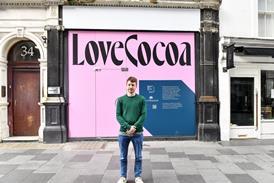


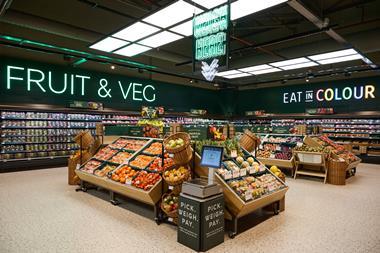

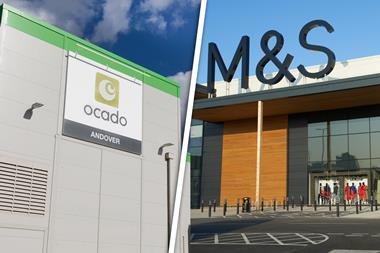
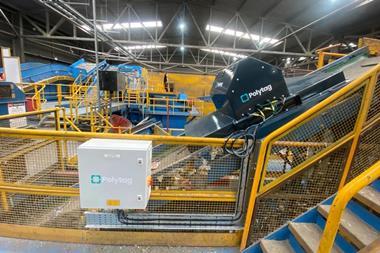
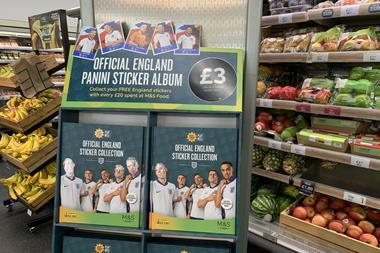
No comments yet